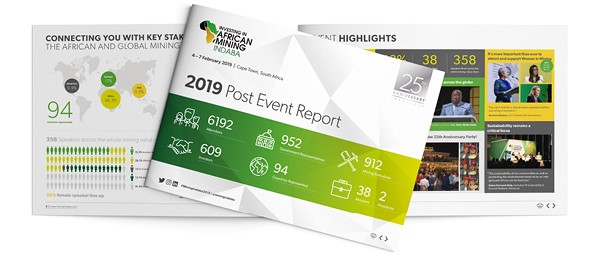Building an Effective Post-Event Summary Report (Step-by-Step)
A post-event report is an essential part of any event’s organization when it comes to measuring results. It is a necessary conclusion used to sum up the data that speaks on the effectiveness and efficient channels per event. Essentially, the report helps you figure out what worked and what should change to increase future success.
It is always better to provide an event report in a short time after an event, preferably in a couple of days. As soon as all the data is gathered and analyzed, it is time to compile the document; here's how.

Reasons to write an event report
Whether we aim it at sponsors, stakeholders, or colleagues, the principal goals of an event report are the same:
-
To analyze the success of the event based on met objectives and KPI;
-
To determine best practices and/or the ones that should be changed;
-
To provide future recommendations for the next event;
-
To identify key metrics to consider in the following event;
-
***A person who reports events needs to inform stakeholders and sponsors on the results and offer future proposals based on objective data.
There is no one ultimate conference report writing sample as the form differs depending on many factors, such as the audience, the event, or the industry.
However, there are certain rules and parts to always include in your post-event summary report...

How to write a recap of an event: step-by-step
The first thing to do, before the writing stage of your post-event report, is to collect all necessary data before, during, and after an event. Even if you are holding a virtual event, there are ways to measure the results effectively.
The question on how to write an event review breaks down to the areas one needs to cover in it, namely:
1. Executive event summary. This is usually a one-page document to provide as a first page. It features all essential metrics, results, and objectives. It summarizes the complete document and is written last. The event summary features the key achievements, insights, and recommendations.
2. Introduction. In this part, a written summary report begins with general information. You need to list the name, the date, the place, and the number of attendees. It also features objectives or the purposes that you’ve aimed to meet. The event report definition is evaluating how the objectives were fulfilled, so be specific with it. Include KPIs here and use these factors as metrics of the event’s success.
***Include the budget in this section. What was actually spent, whether there were unexpected expenses, and why? Reporting events in such a way helps to predict future force majeure and means to avoid it.
3. Audience metrics. The post conference report should offer a comprehensive breakdown of an audience. Include the total number of visitors, staff members, and speakers. Use registration information for building your demographic event summary report. This way you can see whether you’ve hit the target audience with the promotion and what groups of people are interested in such events.
What else can be included in the event wrap up regarding the attendees?
Stats like buyer’s behavior, promotional channels that attracted an audience, results of the attendee survey. It can be done via follow-up emails to show their insight into the program, location, accommodation, etc. You can even use quotations from a survey in a post event summary report
4. Program review. Write about how the lectures went, what speakers were the most engaging, or whether there were any delays or failures. This part helps to understand the value of an event which influences the ticket prices. Gather reviews and feedback from your guests via post-event surveys.
5. Location, logistics, and accommodation review. The wrap report needs to analyze how successful the venue choice and logistics were. Was the venue and accommodation suitable for the program and comfortable for all participants? Was it easy to find? Were all the expectations met? Is this venue recommended for future events?
If not, provide arguments about why and what can be done better next time.
5. Promotion review. Now it is time to report an event in the context of the marketing and promotions efficiency. List all the means of promotion used, such as advertisement, social media metrics, media coverage, etc. Use tools like Google Analytics for website metrics to see what worked best, offer recommendations on how the traffic can be increased in the future, and what channels weren't worth the time. Review whether the best marketing practices were used, for example, the rule for using a day of the week in a story about an upcoming event.
6. Sponsorships. Include the number of sponsors, their packages, the efficiency, and the popularity of the stands. Would you work with them again?
7. Conclusion. Report events with a comprehensive conclusion and list all the recommendations here specifically, even if they were mentioned in previous parts. They all should be gathered in one ending paragraph.
In Summary
Use these tips to help you get a better grip on how to write a report on the event. The pivotal factors here are to collect the data and analyze all channels in order to give valuable insights.
Author: Vitalii Anufriiev
Vitalii Anufriiev is a co-founder and CMO at WritingMetier. He is interested in digital marketing, business strategies, and the use of modern technology for these purposes. He strongly believes that any successful strategy is driven by data and analysis.





